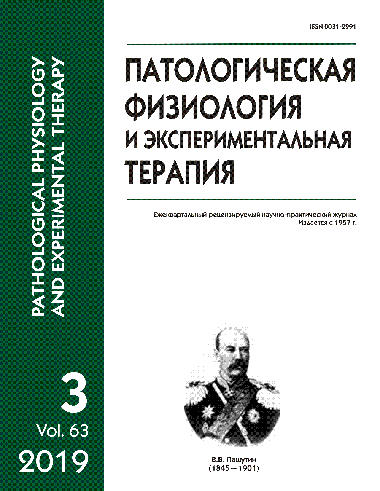Experimental model of vaginal dysbiosis treatment with fraction of serum antimicrobial peptides
Abstract
Extensive use of antibiotics and antimycotics in the treatment of vaginal dysbiosis may result in emergence of resistant microbial strains. Therefore, development of new, broad-spectrum and highly active drugs, particularly based on antimicrobial peptides (AMP) is relevant. The aim of the present study was to evaluate a possibility of using serum AMP in the treatment of vaginal dysbiosis of different etiology on a murine model. Methods. Activity of the AMP fraction of rabbit serum was evaluated in in vitro and in vivo experiments. In the in vitro experiment, the effect of AMP on Candida albicans, Escherichia coli, and Staphylococcus aureus cells was measured spectrophotometrically. This method was based on uptake of the bromocresol purple stain by cytoplasmic membranes of destroyed cells, which resulted in decreased optical density of the supernatant in experimental variants compared to the control. In the in vivo experiments, the therapeutic effect of concentrated serum AMP was evaluated in mice intravaginally infected with the same microbial cultures. The infected mice were treated similarly with the AMP preparation, and the outcome was evaluated using the inoculation of plates with selective media by vaginal material. Results. The serum AMP fraction exerted the most noticeable effect in in vitro experiments on C. albicans cells (activity 32.9 % of control) vs. lower effects on E. coli (23.3 %) and S. aureus (14.4 %). Consistently in the in vivo experiments, the abundance of C. albicans colonies was 44.6% of the initial value after the AMP drug treatment compared to 42.2% after the pimafucin treatment and 90.2% in placebo. The abundance of E. coli colonies after the AMP drug treatment was 65.6% of the initial compared to 26.3% after the metronidazole treatment and 94.8% in placebo; for S. aureus, the abundance was 76.9% (AMP) compared to 11.4% (clindamycin) and 73.0% (placebo). Conclusion. Among the studied microorganisms, C. albicans had the highest susceptibility to serum AMP while S. aureus was the least susceptible both in in vitro and in vivo experiments. Drugs based on the serum AMP preparation may be considered as a possible alternative to traditional medications for the treatment of vaginal dysbiosis, especially for vulvovaginal candidiasis.






